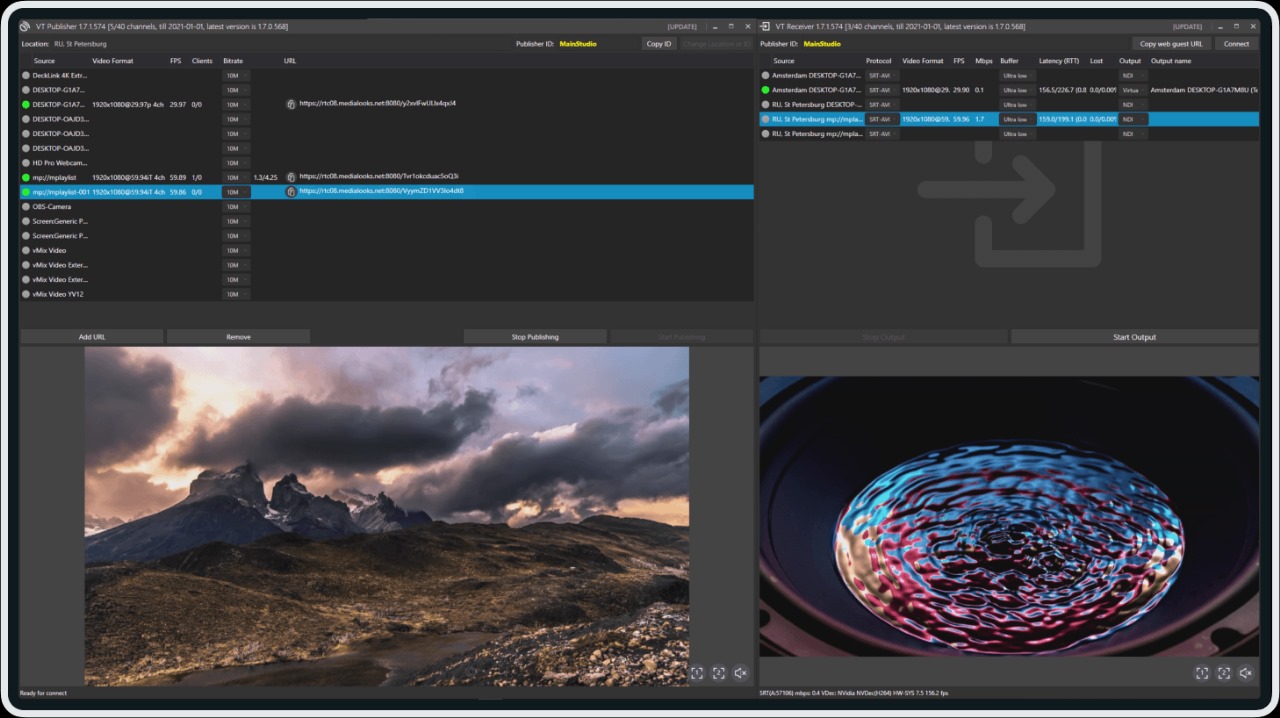Video Transport Software: Revolutionizing Media Delivery
Video Transport In today’s fast-paced digital world, high-quality video delivery is more crucial than ever. Whether it’s for broadcasting live events, remote production, video conferencing, or surveillance, Video Transport Software plays a vital role in ensuring seamless, low-latency, and secure transmission of video content across networks.

What is Video Transport Software?
Video Transport Software refers to specialized tools and platforms designed to move video signals from one location to another over IP (Internet Protocol) networks. These solutions support live streaming, video contribution, and distribution workflows, replacing traditional satellite or fiber-based methods with more flexible, internet-based systems.
The Shift from Traditional to IP-based Transport
Previously, video content was typically delivered via satellite, microwave links, or expensive dedicated lines. However, the rise of IP networks and cloud infrastructure has opened up more efficient and cost-effective ways of video transmission. Video transport software enables broadcasters and content creators to transmit high-quality video over public or private IP networks, even over long distances.
Key Features of Modern Video Transport Software
Let’s explore the standout features that make these tools invaluable for professionals across media, entertainment, and corporate sectors.
1. Low Latency Streaming
One of the most important requirements in video transport is low latency, especially for live events. Leading software solutions can deliver latency as low as sub-second or even milliseconds, making them ideal for sports, news, or interactive applications.
2. Secure Transmission
Security is a top concern, particularly when handling premium or sensitive content. Many platforms offer end-to-end encryption, secure authentication, and firewall-friendly protocols to ensure safe content delivery.
3. High Video Quality
Despite being transmitted over IP networks, modern software supports lossless or visually lossless compression, ensuring that video maintains its original quality. Advanced codecs like HEVC (H.265) and AVC (H.264) are often used to optimize bandwidth usage without sacrificing resolution or clarity.
4. Adaptive Bitrate Streaming
With adaptive bitrate (ABR) support, the software can automatically adjust video quality based on network conditions, preventing buffering and maintaining a smooth viewing experience even on fluctuating connections.
5. Cross-Platform Compatibility
Top video transport tools are platform-agnostic and can run on Windows, macOS, and Linux. They often support integration with hardware encoders, cloud services, and broadcast equipment, providing a flexible and scalable workflow.
6. Remote Production Support
In the age of remote work and decentralized production teams, video transport software allows real-time contribution from multiple remote sources, making it easier to produce live content without requiring everyone to be on-site.
7. Cloud Integration
Many tools now offer cloud-native options for video routing, monitoring, and management, reducing the need for physical infrastructure and enabling global distribution through scalable cloud platforms.
Popular Use Cases
Broadcast and Live Events
Television networks and live event producers use video transport software to transmit live feeds to central studios or distribute to online platforms in real time.
Corporate and Education
Large enterprises and educational institutions use these tools for secure internal broadcasting, remote presentations, or hybrid classroom setups.
Government and Defense
Secure video transport is crucial for surveillance, remote command centers, and intelligence sharing.
Choosing the Right Video Transport Solution
When selecting a video transport solution, consider the following factors:
- Latency and reliability for your specific use case
- Network conditions (e.g., public internet, VPN, or private fiber)
- Video quality requirements
- Budget and scalability
- Compatibility with your existing infrastructure
Future of Video Transport Software
The future of video transport is moving towards AI-driven optimization, 5G integration, and ultra-low-latency streaming. As video quality demands grow (think 4K, 8K, and VR), the need for robust, scalable software transport solutions will continue to rise.
Conclusion
Video transport software is transforming how we deliver and consume video. With real-time capabilities, improved security, and better scalability, it’s empowering industries to push the boundaries of live broadcasting and remote content creation. As technology advances, these platforms will only become more integral to modern digital workflows.
